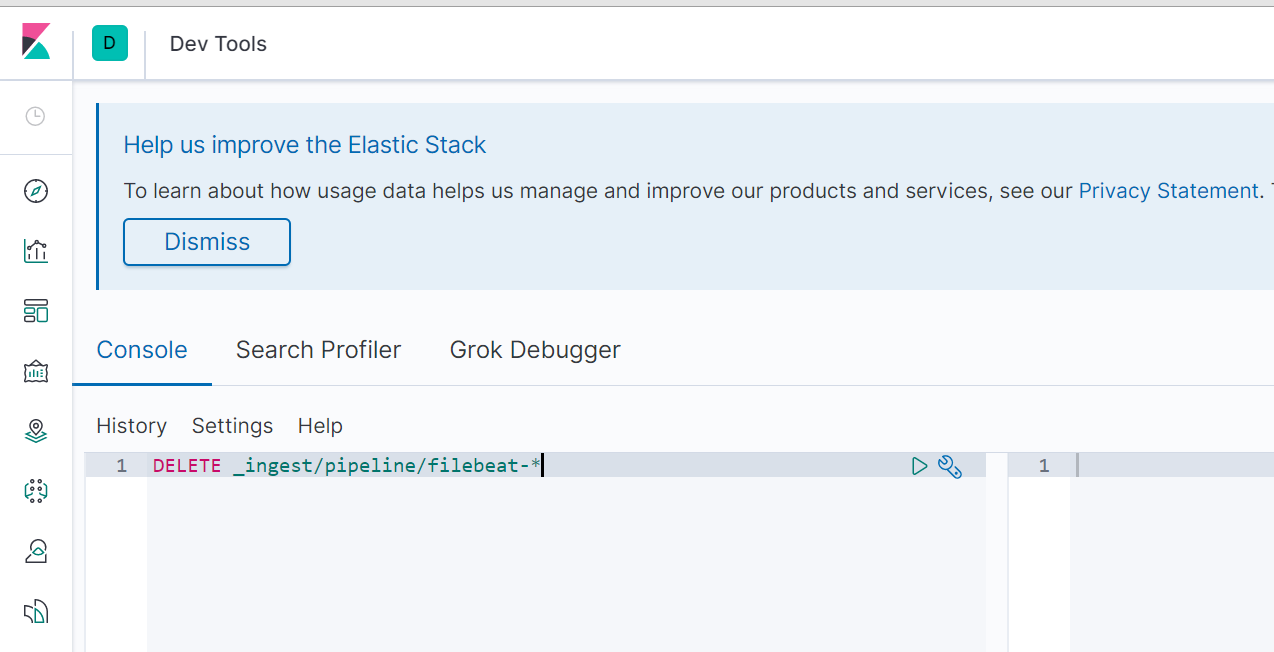通过filebeat的modules搜集nginx日志
前提安装好ES和Kibana
NGINX日志格式如下
log_format main '$remote_addr - $remote_user [$time_local] "$request" ' '$status $body_bytes_sent "$http_referer" ' '"$http_user_agent" "$http_x_forwarded_for" ' '"$request_body" "$upstream_addr" "$uri" "$upstream_response_time" "$upstream_http_name" "$upstream_http_host" "$request_time" ';
1.下载并安装filebeat
rpm -ivh filebeat-7.5.1-x86_64.rpm
2.启用nginx modules
filebeat modules enable nginx
3.配置NGINX访问日志路径
/etc/filebeat/modules.d/nginx.yml
- module: nginx # Access logs access: enabled: true # Set custom paths for the log files. If left empty, # Filebeat will choose the paths depending on your OS. var.paths: ["/var/log/nginx/*.access.log"]
4.配置ES地址并修改index名称
/etc/filebeat/filebeat.yml
#==================== Elasticsearch template setting ========================== setup.template.settings: index.number_of_shards: 1 #index.codec: best_compression #_source.enabled: false setup.ilm.enabled: false setup.template.name: "filebeat-nginx" setup.template.pattern: "filebeat-nginx-*" #-------------------------- Elasticsearch output ------------------------------ output.elasticsearch: # Array of hosts to connect to. hosts: ["192.168.160.34:9200"] index: "filebeat-nginx-%{[agent.version]}-%{+yyyy.MM.dd}" # Optional protocol and basic auth credentials. #protocol: "https" username: "elastic" password: "pass"
5.修改日志的默认匹配规则
/usr/share/filebeat/module/nginx/access/ingest/default.json
添加upstream_addr、upstream_url、upstream_response_time、request_time等字段
可以通过Grok Debugger检查匹配规则是否正确:http://grokdebug.herokuapp.com/
"grok": { "field": "message", "patterns": [ "\"?(?:%{IP_LIST:nginx.access.remote_ip_list}|%{DATA:source.address}) - %{DATA:user.name} \\[%{HTTPDATE:nginx.access.time}\\] \"%{DATA:nginx.access.info}\" %{NUMBER:http.response.status_code:long} %{NUMBER:http.response.body.bytes:long} \"%{DATA:http.request.referrer}\" \"%{DATA:user_agent.original}\" \"%{URIHOST:nginx.access.upstream_addr}\" \"%{DATA:nginx.access.upstream_url}\" \"%{NUMBER:nginx.access.upstream_response_time:float}\" \"-\" \"-\" \"%{NUMBER:nginx.access.request_time:float}\"" ], "pattern_definitions": { "IP_LIST": "%{IP}(\"?,?\\s*%{IP})*" }, "ignore_missing": true }
6.修改fields字段
/etc/filebeat/fields.yml
添加upstream_addr、upstream_url、upstream_response_time、request_time等字段
- name: agent type: alias path: user_agent.original migration: true - name: upstream_response_time type: alias path: upstream_response_time migration: true - name: upstream_addr type: alias path: upstream_addr migration: true - name: upstream_url type: alias path: upstream_url migration: true - name: request_time type: alias path: request_time migration: true
删除原有的pipeline,防止kibana不显示自定义的字段

重新启动filebeat,查看自定义的字段是否出现

字段出来以后有黄色小三角,刷新一下index 的字段缓存就好了

参考:https://www.iamle.com/archives/2610.html
https://elasticsearch.cn/question/4580




 浙公网安备 33010602011771号
浙公网安备 33010602011771号